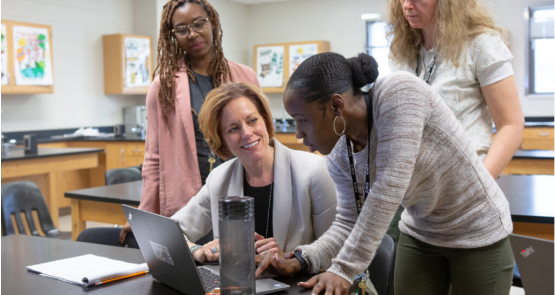How to Teach Critical Thinking
Teaching critical thinking is imperative. Every minute of life in the modern world, we are confronted with information and misinformation, advertising and distractions, complexity and ambiguity. Making sense of it all — distilling it, separating the important from the trivial — requires skill, patience, and practice. It requires, in brief, critical thinking. Yet we largely do not teach our children how to do it. Reboot’s guide for teachers contains resources for teaching critical thinking to students of all ages, in any subject, including math, science, literature, civics, writing, and philosophy. The guide — written with teachers, for teachers — is an invaluable resource for teaching the skills needed to be engaged and informed global citizens.
Critical thinking has never been more important than it is today. Learn basics like what critical thinking means, what habits good critical thinkers develop, and how critical thinking can be integrated into existing curricula.
Literature is a great way to get students thinking critically. By considering open-ended questions, interrogating multiple perspectives, and connecting texts to the world at large, students develop essential interpretive skills.
Scientific reasoning and scientific method are cornerstones of critical thinking. This article offers tips for integrating critical thinking into both small-group activities for younger students and labs for older students.
Writing and thinking are intimately connected processes. Teaching argumentative writing, especially through structured feedback and revision, helps students develop important analytical skills.
Traditional mathematical education can gets bogged down in rote application of formulas and tools. Our article on mathematical reasoning leverages open-ended problem-solving and modeling activities to get students thinking more deeply about math — and the world around them.
Media literacy is an absolute must for today’s young people. As they navigate the rise of fake news and misinformation, disruptive changes to media, and endless tech-based distractions, students need tools to think critically about information and media.
Teaching civics in today’s highly contested political environment can be daunting. But it’s vital, both for students and for society in general, that young people gain practice discussing controversial issues.
Although not typically taught in K-12, philosophy can develop critical thinking skills. It helps students to reflect deeply and abstractly on their own values and knowledge, and to build connections between subjects.
Lindsey Jansen on Reboot's Teachers' Guide
How to Teach Critical Thinking: A Roundtable Discussion
Reboot Teacher Network
These outstanding teachers offered feedback and shared their ideas as we developed the content for this guide. All are former teachers of the year for their state or county. We are very grateful for their insights
- Susan Barry, 11-12th grade English/Language Arts, New Jersey
- Katherine Bassett, CEO, Tall Poppy, LLC
- David Bosso, 9th-12th grade Social Studies, Connecticut
- Allan D. Bruner, 8th-12th grade Statistics, Biology, Chemistry, and Earth Sciences, Oregon
- Whitney Crews, 4th-6th grade Gifted and Talented, Science, and Social Studies, Texas
- Michael Dunlea, 3rd grade, New Jersey
- Mohsen Ghaffari, 5th grade, Utah
- Marguerite Izzo, 5th grade English/Language Arts and Social Studies, New York
- Lindsey Jensen, 12th grade English/Language Arts, Illinois
- Rebecca Mieliwocki, 7th grade English/Language Arts, California
- Amanda Miliner, 4th grade and Assistant Principal, Georgia
- Susanne Mitko, 7th-8th grade History and Social Studies, Missouri
- Michelle Pearson, 7th-8th grade History, Social Studies, and Humanities, Colorado
- Mary Eldredge Sandbo, 10th-12th grade Biology, North Dakota
Neither the reviewers nor the members of the Reboot Teacher Network are responsible for the content of the guide.



